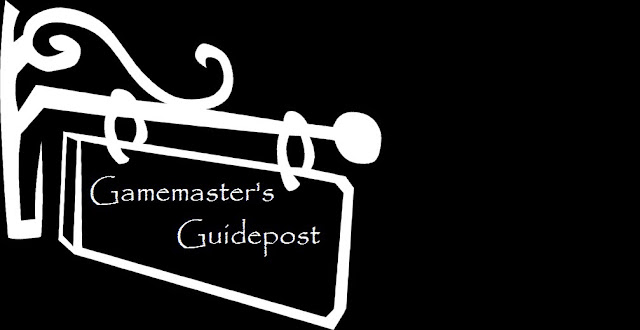Continuing my previous post in this three part series. Previously, we talked about framing their preferences as concerns their characters (e.g., how much combat they wanted in the campaign on a per session basis). Basically, how the players expect their characters to react to the campaign world Today I talk about framing the player’s preferences concerning the campaign world. That is, how the players expect the campaign world to react to them.
Like before, these questions are best asked before the first game session or at least before the first three are completed. Like before, ask your players to take a quick survey on exactly what they want the campaign world to function like.
Each question has an answer of 0 (I don’t want the campaign world to function like this at all) to 5 (I want the campaign world to function exactly like this) and theme describing the attributes of a campaign world. This lets the GM know exactly how the players want the campaign world to function when it comes to them.
Framing Scale
The scale used to answer these questions is as follows:
0 – I don’t want the campaign world to function like this at all.
1 – I would prefer if the campaign world almost never functioned like this.
2 – I would prefer if the campaign world rarely functioned like this.
3 – I don’t mind if the the campaign world functions like this
4 – I want the campaign world to function mostly like this
5 – I want the campaign world to function exactly like this
Next, determine we determine the elements (and subtypes) themselves;
Framing Elements
A few elements common to all campaigns;
Austerity: Pertains to how the player’s actions affect the campaign world. A high austerity campaign world means the character is unlikely to get away with anything he couldn’t in the real world, while a low austerity one represents just the opposite. Subtypes: High Austerity (Player character actions are treated just like they would be if they had occurred in the “real world.”), Medium Austerity (Player character actions have consequences some of the time – usually in service of the plot), and Low Austerity (Player character actions rarely have consequences and when they do it’s almost always in the service of the plot).
Scale: Pertains to how the players interact with the world itself. E.g., do they hold jobs while being adventurers? Subtypes: Everyman (Players are expected to deal with “real life” and “adventuring” at the same time), Heroic (The GM decides, but usually the players “adventuring life” takes center stage, except for the occasional “day in the life of” game session), and Epic (The players’ job is “adventuring!”).
Scope: Pertains to how the players interact with the campaign’s “environment” and how it interacts with them. Subtypes: Local (The campaign takes place in a specific town, city, or other central location. This does not have to be stationary! A space station could be considered a “Local” campaign even though it could be revolving around a planet or moon), National (The campaign takes place in a specific country, nation, or planet (in a space-faring or planet hopping campaign)), and Global (The campaign takes place on a global scale. Game sessions are almost always in different locations around the global. In a space-faring or planet hopping campaign this is probably best described as Intersteller or Galactic.)
Mode: Pertains to how the campaign world functions on a realistic vs. cinematic scale. Subtypes: Realistic (the campaign world is as “real” as it can get for a game), Gritty (the campaign world is grounded in realism, but isn’t harsh realism), Base Realism (the default GURPS assumption), Action-Packed (like Gritty, but in the opposite direction), and Cinematic (the campaign world is larger than life). A further option is available for some campaigns: Mixed Mode (the campaign is a mix of two compatible subtypes such as Base Realism and Action-Packed)
Genre: Pertains to the tropes and genre conventions of the the chosen genre or genres. There are no subtypes for this – set as many genres as you want to pack in (no more than 5 is recommended, however). Getting the right mix of genre types can be hard and you should consult your players to make sure you don’t use something they flat out don’t want!
Power Level: Pertains to the point value of the player characters as well as the average point value for NPCs in the campaign. Give examples for each subtype as well (e.g., PC/NPC point options may be heroic (100 points), cinematic (200 points), and larger than life (300 points). Subtypes: Player Character/Import NPC point values and Normal NPC point values.
Putting it All Together
Once you have the responses from your players, total the scores together and then average them. For example if you had four players and each of them put 1, 4, 3, and 4 for Mode then overall the PCs likely want a “base line” GURPS campaign.
I’ve created a Google Form you can modify for your use. Get it here.
Picking Over the Bones
After deploying the first survey to the B-Team, it worked fairly well. One thing that +Douglas Cole suggested was to treat the number of sessions an element pops up as a percentage instead. I’m sure someone smarter and well-versed in math could do that, but I don’t have the inkling of how to do that.
The final post is going to be about tying it all together and letting the players know what kind of game the GM wants to run. Mixed expectations between players is fixable – mixed expectations between the players and their Gamemaster (usually) aren’t.


This is a pretty good post, and the only thing I'd add to it is a power level rating for each of: mundane abilities, cinematic abilities, and supernatural abilities. This way you can distinguish between purely mundane games, cinematic games with a touch of the supernatural, and full-blown four color comic style games.